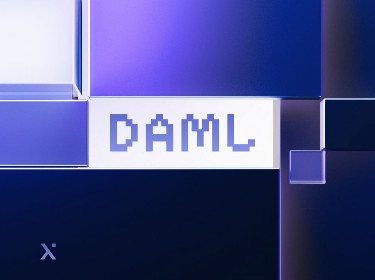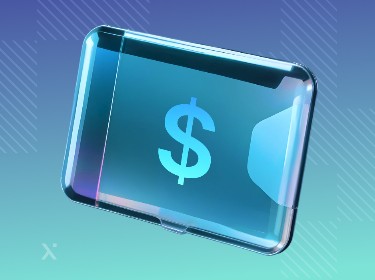With the development of blockchain technology, many concepts that previously existed only as theories are starting to take real shape. One of them is the virtual world that we call the "metaverse."
The idea of the metaverse was first outlined by Neal Stephenson in his science fiction novel “Snow Crash” back in 1992. In the early ’90s, the idea remained just a fantasy. However, with the advent of blockchain technology, it has found a role in specific projects that have already attracted millions of people worldwide.
Crypto and NFTs have made it possible to establish a fully functioning economy within the virtual world where you can buy and sell any virtual assets. A lucky few have already managed to make a lot of money by closing deals to sell virtual real estate, digital art objects, and more.
Not surprisingly, many experts are expressing keen interest in this niche and asserting that blockchain and metaverses have the potential to revolutionize the digital space and the Internet as we know it. Let’s take a deeper dive into these technologies.
Check out our metaverse consulting and development services to discover what we can offer your business in this realm
What is the metaverse?
The metaverse is a virtual reality space where users can interact with a computer-generated environment and other participants in real time. The user can enjoy everything that they do in real life, such as visit specific locations, meet people, buy works of art, or sell real estate. Experts agree that creating a metaverse can change the way everyone involved interacts.
In fact, it is already happening as the metaverse is gaining more users and more companies are joining the space. A survey conducted in the US in 2022 found that 36% of online adults expressed interest in using the metaverse, and an additional 12% showed a strong level of enthusiasm.
While it is challenging to determine the exact number of people currently “living” in the metaverse, we can check the number of users at some popular platforms. For instance, Roblox, one of the pioneering metaverse projects, had more than 66.1 million daily active users worldwide in the first quarter of 2023.
The market is experiencing gradual growth as well. According to a report by Grand View Research, Inc., the global metaverse market is projected to reach a size of $936.57 billion by 2030, with a CAGR of 41.6% from 2023 to 2030.
If you want to gain more detailed insight into the metaverse, our R&D consulting team has prepared an explanatory video that covers the key fundamentals of the sophisticated trend. This comprehensive overview will help you better understand how the metaverse works, what technologies it relies on, and what business opportunities you can take advantage of.
Why metaverse needs blockchain technology
The concept of the metaverse is directly related to blockchain, augmented and mixed reality, NFTs, and many other tech advancements of recent years. Here, we are going to focus on blockchain technology to understand why the metaverse needs it.
Traditional ecosystems are usually centralized, which carries a lot of risks in terms of the creation and functioning of the virtual world. These can be hacks, malware, and even centralized decision-making regarding the functioning of the metaverse. Thanks to its decentralized nature, blockchain technology minimizes these risks and makes it possible to build a stable virtual ecosystem.
Furthermore, many blockchain-based platforms use so-called NFT and cryptocurrency, providing an ecosystem for creating, owning, and monetizing decentralized digital assets. A qualified NFT token development company can help implement these technologies.
Consequently, decentralization and digital asset managementcapabilities are among the main reasons why blockchain is crucial for the metaverse.
Here are other essential characteristics that clearly demonstrate how blockchain technology can fulfill the requirements of the metaverse:
- Security. The fact that the metaverse stores data measured in exabytes raises the question of safe storage, transmission, and synchronization. In this sense, blockchain technology is very relevant in the context of decentralization of storages and data processing nodes.
- Trust. Blockchain implies the presence of tokens — secure storage devices capable of transmitting the likes of virtual content, personal, data and authorization keys in encrypted form. In this regard, the metaverse blockchain increases the users’ trust in the ecosystem due to the fact that confidential information will not be available to third parties.
- Smart contracts. These make it possible to effectively regulate economic, legal, social, and other relations between ecosystem participants within the metaverse. In addition, smart contact development services allow you to develop and implement the basic rules for the operation of the metaverse.
- Interoperability. Blockchain facilitates the joint interoperability and functioning of different systems and interfaces without restriction. This is especially relevant when it comes to NFT valuation and turnover.
- Money relations. Cryptocurrency, being an integral part of the blockchain, can act as a properly working analog of traditional money; and via the metaverse crypto it is an effective way to perform mutual settlements.
In addition to these points, you can use blockchain in identity management by verifying and validating users, thus ensuring the authenticity of participants within the virtual world. It also provides secure asset validation, seamless asset transfer, and verified access granting.
Last but not least, blockchain can enhance governance within the metaverse by providing a transparent and decentralized framework for decision-making processes.
Overall, these features address the specific needs of the metaverse and make blockchain an ideal technology for its implementation.
See how our blockchain consulting services can help take your business to a whole new level
Overview of blockchain use cases in the metaverse
![]()
In developing and operating the metaverse, blockchain can be applied in a variety of ways. Below are the main examples of how this technology is used.
In-game assets
Many blockchain experts are saying that games will soon become the area where the concept of the metaverse really gets going. They predict that virtual assets used by the players will be presented in the form of non-fungible metaverse tokens and that in due course the gameplay will enable players to earn real money that can be used as means of payment within a specific ecosystem.
For players, the introduction of blockchain technology and enterprise blockchain development services integration means that even if the user comes out of the game, deletes it, or falls victim to some adverse life event, their assets will stay safe.
A vast amount of capital is being invested in this area, with developers of advanced technologies busy exploring this niche.
Get more insights into GameFi — a novel trend uniting gaming and blockchain-powered decentralized finance
Virtual currencies
Settlements are one of the most obvious uses of blockchain technology within the metaverse. The day when customers shop in virtual stores is not far off. Given the rising consumption and the shift from offline trading to online stores, it is evident that crypto will soon find widespread applications within decentralized ecosystems.
One popular metaverse NFT game Axie Infinity, for example, has over a million active participants. A special feature of this game is that the players are rewarded with an internal currency which serves to motivate new participants to join.
In the future, users will be able to buy virtual analogs of everything that can be purchased in the real world. This technology will not be limited only to games: the dynamically developing niche of DeFi may well become a testing ground for virtual lending, borrowing, investing, and trading within the metaverse. Thus the scope of cryptocurrency appears theoretically unlimited.
NFTs
According to many experts, non-fungible tokens will take up a key role in the metaverse. Acting as proof of ownership of digital assets, these tokens will be involved in digital art trading, where they are already regularly used.
Moreover, NFTs have an enormous potential to be integrated into any metaverse crypto projects related to the purchase of any game assets, avatars and so on. In addition, if this area continues to develop, non-fungible tokens will soon be used as proof of ownership of real estate.
In a broad sense, an NFT is an access key to specific areas of the metaverse (in other words, the right to control a certain part of the virtual environment). Besides this, instead of fungible tokens, metaverse NFT games will eventually use tokens as a reward.
Meanwhile, non-fungible tokens will be used to assign value to specific digital assets: this is very important, as almost any digital asset can be cloned an unlimited number of times, and only a certificate of ownership built into a digital object can confirm the right of the legal owner.
Check out xtingles — the first NFT marketplace for ASMR-tists based on the Flow blockchain
Self-identity authentication
In the metaverse, self-identity authentication is accomplished similarly to the assignment of a social security number. All the necessary data about a specific user is stored on the blockchain. This ensures maximum transparency and prevents illegal activities in the metaverse.
Simultaneously, blockchain protocols strive to protect users’ privacy. How is that possible while also providing transparency? Thanks to zero-knowledge proofs. When zero-knowledge proof technology is applied in a blockchain protocol, this means that users can prove their authenticity without revealing sensitive data, such as actually demonstrating age or ownership of assets.
With this technology, all interactions and transactions within the metaverse undergo continuous verification, ensuring that only authorized parties can access and engage with assets or documents.
Real estate
Real estate is one of the main digital assets in the metaverse. The chief concerns here are how to assess a virtual real estate object, and how to regulate this market if the metaverse actually represents an infinite digital space. This is where the metaverse blockchain can be used as a kind of registry that records all actions performed with virtual real estate assets, such as creation, change, purchase, sale, or disposal.
To sum up, it’s clear that even though the metaverse and the blockchain have been developing as independent concepts, the potential of both will be fully realized only when they are integrated. The concepts have their complementary functions, which will eventually have a synergistic effect: people will notice something fundamentally new, which in turn will help change the perception of virtual reality and crypto metaverse.
Introduce yourself to Echo — an advanced blockchain ecosystem with DeFi-styled bridges
Top 5 blockchain and crypto projects in the metaverse
![]()
Right now many developers are applying the concept of the metaverse to real blockchain projects. Here are the top 5 blockchain ecosystems.
The Sandbox
This NFT game is extremely popular at the moment. As of July 2023, the game boasts an average daily player count of approximately 22,900, with a total player base reaching 850,800.
The Sandbox was originally created as a regular mobile app, but over time it has evolved into a complex Ethereum-based metaverse with its own SAND token. As of July 6, 2023, this token’s market cap is over $801 million.
Users create an avatar that connects to an e-wallet for managing NFTs, SAND, and a range of other assets too. The game has an integrated “play-and-earn” model aimed at further stimulating the domestic economy. Interestingly, some of the real world’s celebrities and brands such as Snoop Dogg, Paris Hilton, Gucci, and Adidas are already present in the Sandbox metaverse ecosystem.
Decentraland
This is a 3D metaverse where users can generate avatars, buy and equip the land plots, organize various events and create digital content. The domestic economy of Decentraland operates on the blockchain which enables digital identification and confirmation of in-game assets ownership.
The main digital asset in the game is virtual real estate called LAND. Moreover, the metaverse has a native ERC-20 cryptocurrency token MANA, which is used as an internal means of mutual settlement between the players.
Numerous million-dollar deals are already being closed within this metaverse. For instance, in February 2022, luxury designer Philipp Plein acquired a plot of land in the game for 510,000 MANAs, equivalent to approximately $1.4 million at the time.
Enjin
Enjin is a unique implementation of the metaverse concept. It not only operates on the blockchain but also offers opportunities for developing software and SDK for the easy creation of NFT. It involves a secure Ethereum-based NFT development platform. The system also ensures digital assets are highly liquid by converting Enjin NFT into ENJ metaverse tokens. What’s more, as ENJ tokens are scarce, they retain their value and digital collectability.
Star Atlas
The metaverse Star Atlas is one of the latest releases built on the basis of the multiplayer gaming products using DeFi and metaverse blockchain technologies. The players of Star Atlas can purchase digital assets such as land, spaceships, equipment, and crew. The POLIS monetary system, which forms the basis of the in-game economy, has also been introduced. Given the many innovations used in the development of this game, experts believe that Star Atlas has serious potential.
Bloktopia
Bloktopia is a metaverse example built on top of the Polygon blockchain where you can learn, earn money, play games, and create — all in virtual reality. Bloktopia has an integrated play-to-earn game implemented through the internal metaverse token BLOK and in addition provides advertising opportunities for Adblok. It also allows you to sell real estate via Reblok, and gives you the chance to create your own gaming immersive environments and enjoy various games within the metaverse.
Metaverse and web3: are they the same?
Another important concept related to blockchain and the metaverse is web3. The words metaverse and web3 have started to be used interchangeably. However, even though they both focus on developing a better, future internet, these are two extremely different concepts.
The metaverse focuses on how users will experience the internet of the future while web3 is centered on who will own and control it. Its major goal is to solve the shortcomings of web2 internet like data breaches and data privacy issues. Web3 will leverage blockchain to enable decentralization and let users own and control their data.
The concept of web3 is still under development, yet we already see some of its elements like non-fungible tokens, which leverage blockchain to help people monetize their skills in new ways, and play-to-earn games that help people earn revenue while playing.
While some argue that web3 is a major building block for the metaverse, it is only one component of a greater sum.
Would you like to thoroughly investigate the differences between the metaverse and web3? Check out this article
Conclusion
There are many differing visions for the metaverse concept, yet almost all experts agree that it is a niche with a great deal of promise. Blockchain is clearly a necessary technology for the main elements of the metaverse, which include digital proof of ownership, money transfer, governance, accessibility, and interoperability.
The principal challenge is to choose a project that users will like and that will attract new participants, thereby increasing its capitalization and the value of digital assets affiliated with a particular metaverse.
If you are ready to join the space and develop your own virtual world, don’t hesitate to reach out to our blockchain development company. We will provide you with comprehensive and expert advice on the most suitable blockchain protocols for your metaverse project.
Our blockchain professionals will guide you through the entire development process and help you maximize the potential of your unique ideas. Let’s work together to bring your metaverse vision to life.




